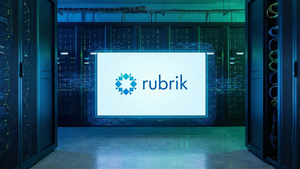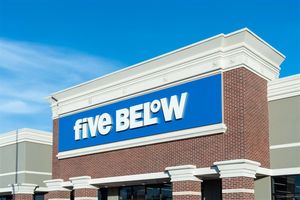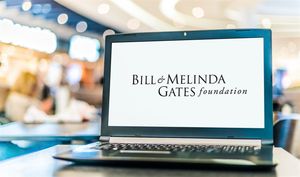By Sebastian Steinhaeuser | Chief Strategy Officer, SAP
SOURCE: SAP
DESCRIPTION:
Sustainability has become a business imperative. Consumers, investors, regulators, and employees are all increasingly demanding socially, environmentally, and economically responsible products and services that have been designed, produced, used, and recycled with circularity principles in mind.
At SAP, we are convinced that technology will help to turn this challenge into a big opportunity for companies that lead the way. That is why we launched SAP Cloud for Sustainable Enterprises, with dedicated solutions to provide the transparency that is urgently needed to enable a circular economy.
Circularity Makes Sense
Our consumption of natural resources has devastating effects for humans, wildlife, and the planet. It is more urgent than ever to shift from linear take-make-waste models to a circular economy, where waste and pollution are designed out, products and materials are kept in use for longer, and natural systems can regenerate. A circular economy isn’t just about fixing environmental wrongs; it is about making sustainability profitable and profitability sustainable across industries, sectors, and lives.
The packaging sector is a good example. According to Statista, more than 130 billion parcels were shipped in 2020, and the number is rising. This packaging frustrates retailers and consumers and causes untold environmental damage. The good news is that circular business principles such as designing for reuse and recycling are gaining ground in the industry.
One exemplary company is LimeLoop, which offers retailers everything they need, including reusable packaging, reverse logistics, visibility, and analytics. As a result of its unique approach, LimeLoop has helped divert more than 1 million single-use packages from landfills. Its customers report a 53% increase in customer engagement, 93% savings on resources, including trees, water, and oil, and 41% savings on packaging and inventory.
Rental, repair, and resale models are also gaining ground in the retail industry. Furniture manufacturer and retailer IKEA has launched several resale pilots in the last few years. Lizee, the re-commerce software company, is on a mission to “transform the retail industry from linear to circular” by helping retailers move from selling to renting and reselling. Its clients, which include brands such as Decathlon and adidas, don’t have to start from scratch to build a rental and resale business model. Lizee provides the technology systems that will help them become even more successful in e-commerce and more sustainable at the same time.
Taking Responsibility
Extended producer responsibility (EPR) laws play a key role. These regulations help ensure that the manufacturer of a product is responsible for its ultimate recycling, reuse, or disposal. Additionally, there has been a surge in plastic taxes, which impose a charge on companies using materials that do not contain a certain amount of recyclable content.
Lizee’s circular economy offering helps retail companies comply with groundbreaking regulations in France that forbid the destruction of goods that have not been sold. The ban is part of a wide-ranging anti-waste law passed by the French parliament last year, and pressure is growing throughout the European Union to implement similar regulations.
In the past, manufacturers used to design products based on cost and performance as the key selling points; going forward, they will focus on sustainability and recyclability. This change is driven by customer demand, the availability of technology, and the new regulatory environment.
This is great news for the planet but poses a market-by-market challenge especially for large producers, because it is very difficult to adhere to regulations on their products in different geographies. Manufacturers embarking on transformational journeys are challenged by complex supply chains, heavy assets, and legacy technology.
In fact, managing the life cycles of thousands of products and tens of thousands of materials across hundreds of regulatory systems in multiple regions is one of the greatest challenges facing global brands in the years ahead. SAP Responsible Design and Production helps enterprises follow regulations and tackle the complexity of moving away from a take-make-waste linear economy to a circular one that is designed to reuse, repurpose, and recycle.
Understanding Materiality
Along with the focus on responsible production, investors are increasingly applying environmental, social, and governance (ESG) factors as part of their analysis process to identify risks and opportunities.
In its recent ESG Investor Survey, PwC found that 49% of investors globally would divest from companies that are not taking sufficient action on ESG issues, and 79% identified a firm’s management of ESG risks and opportunities as an important factor in investment decision-making. Since June 2021, about one in three dollars managed globally was invested with some form of ESG strategy — more than $35 trillion in total.
Materiality, a measure of how important a piece of information is when making a decision, plays a key role in how ESG factors are weighted. Factors differ based on industries and can influence financial fundamentals. In the case of airlines, for instance, material ESG factors would include fuel efficiency, carbon emissions, and health and safety practices, which would have a bigger impact on bottom line and consumer expectations compared to issues such as child labor.
The importance of materiality was highlighted in a recent survey by SAP Insights, The Balance Sheet Blindspot: How Sustainability Affects Competitiveness and Profit. The survey found that companies that believe sustainability is material to their businesses — meaning it is likely to affect their financial condition or operating performance — are transforming their companies and achieving better business results than the those that don’t believe sustainability is material. Those companies that can see beyond the sustainability blind spot are the ones that will enjoy long-term growth.
Unlocking Economic and Social Value
One great example of a circular, regenerative approach that helps retailers pursue the path to zero waste and remain profitable at the same time can be found in fashion retail, one of the most polluting industries on the planet. Recognizing the huge value of waste, Stephanie Benedetto, a former attorney with a background in New York’s garment industry, created Queen of Raw, a marketplace for buying and selling unused textiles that would otherwise be burned or buried.
Benedetto realized that retailers often become paralyzed when faced with objectives like becoming 100% sustainable by 2030. She started helping them pinpoint the valuable waste in their supply chain, such as unused inventory and deadstock, and sell it on the marketplace.
Sales of unused inventory can be used to pay workers better wages and to buy innovative technology and sustainable materials — all without increasing overall capital expenditures.
Benedetto believes technology and the use of existing data, such as supply chain data from an SAP solution, can help solve the waste problem. Data shows where the waste comes from, what it’s made of, and where it goes. Using supply chain software, powered by technologies such as automated machine learning, artificial intelligence (AI), and blockchain can turn a linear business model into a circular model that protects the environment while driving financial value.
Companies like Queen of Raw, Lizee, and LimeLoop are recognizing the risks and the opportunities in today’s climate-changing world. By offering clear strategies, circular models, and innovative tools and solutions, they are helping their customers reach their targets for zero waste, zero emissions, and zero inequality.
The way business runs today is not sustainable and transitioning to sustainable business is the greatest social and economic opportunity of our time. Businesses need to put sustainability at the core of their strategies and use technology to manage the “green line” through their business. With SAP Cloud for Sustainable Enterprises, SAP helps reinvent companies into sustainable enterprises that use the power of data, networks, and partnerships to achieve their targets.
KEYWORDS: SAP, NYSE: SAP, Sebastian Steinhaeuser





